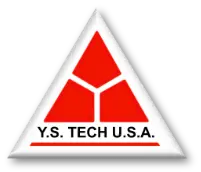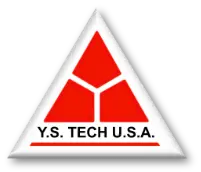Simulation-Driven Design: Revolutionizing Thermal Management in the Automotive Space
"The car has become an article of dress without which we feel uncertain, unclad, and incomplete," Marshall McLuhan once observed, capturing the profound connection between humans and their vehicles. Today, this sentiment extends beyond the physical form of the car to the electronic systems that power it. As the automotive industry races towards a future defined by electric vehicles (EVs) and advanced electronics, efficient thermal management is more critical than ever.
Simulation-driven design stands out as a revolutionary approach, providing engineers with the tools they need to tackle the complex challenges of heat management in automotive electronics.
The advantages of simulation-driven design for thermal management
1.Early identification of thermal issues
Simulation allows engineers to predict and visualize the thermal behavior of electronic components before physical prototypes are made. Identifying potential overheating issues early on enables design modifications that prevent costly redesigns and development delays. By pinpointing thermal hotspots, engineers can optimize system performance, ensuring reliability and longevity. Companies like Dassault Systèmes have established thermal simulation workflows that significantly reduce turnaround times, helping vehicles meet high reliability standards.
2.Reduced development costs and time
Simulation tools dramatically reduce the need for physical prototypes, leading to substantial cost savings. This virtual testing environment enables rapid iteration and exploration of design alternatives without the expense and time associated with prototype manufacturing. The result is a faster time-to-market, providing a competitive edge in the fast-paced automotive sector.
3.Enhanced product performance and reliability
By accurately predicting thermal behavior, simulation-driven design optimizes cooling strategies like heat sinks, fans, and liquid cooling systems. This ensures electronic devices operate within safe temperature limits, enhancing performance and preventing failures due to overheating. Reliability is especially crucial in safety-critical vehicle systems.
4.Improved energy efficiency
Effective thermal management directly impacts energy efficiency, particularly in EVs, where battery life is paramount. Simulation-driven design helps minimize energy consumption by optimizing thermal systems, leading to longer battery life and reduced energy costs. This contributes to lowering the vehicle's carbon footprint, aligning with global sustainability goals.
5.Comprehensive analysis capabilities
Simulation software offers the ability to analyze complex thermal phenomena that are difficult to test in the real world. Engineers can study the effects of environmental conditions like ambient temperature, airflow, and humidity on electronic systems' thermal performance. This comprehensive analysis ensures products are robust and can reliably operate under diverse conditions.
6.Integration with other simulation domains
Thermal management doesn't exist in isolation; it interacts with other physical domains like structural, fluid dynamics, and electromagnetics. Simulation-driven design integrates thermal analysis with these domains, providing a holistic view of product performance. This multi-physics approach leads to a better understanding of system interactions, resulting in a more refined and robust design.
7.Customization and flexibility
Simulation tools offer high customization, enabling engineers to tailor thermal management solutions to specific customer needs. This flexibility is invaluable in the automotive industry, where vehicles and electronic systems have varying requirements and constraints.
8.Knowledge and innovation
Insights from simulation-driven design feed into a continuous cycle of learning and innovation. Engineers can leverage data and experiences from previous simulations to inform future designs, contributing to a growing body of knowledge within the organization. This iterative process fosters innovation and drives the development of new and improved thermal management solutions.
The automotive industry stands at a critical juncture where mastering electronic thermal management will separate the leaders from the laggards. Simulation-driven design not only streamlines the engineering process but also enhances the performance, reliability, and efficiency of automotive electronics. As the industry evolves, advanced simulation techniques will be vital in addressing the thermal management challenges of tomorrow's vehicles.
In an age where precision and foresight are essential, simulation-driven design reflects McLuhan's vision of technology as an extension of ourselves—a tool that, when expertly wielded, completes the modern automotive ensemble with grace and efficiency.
About YS TECH
YS TECH is a leading designer and manufacturer of thermal solutions, specializing in low-noise, high-performance DC axial fans, blowers, and heat sink technologies. Based in Huntington Beach, California, we provide reliable, high-quality products for demanding applications across various industries.
At YS TECH USA, we offer the capabilities of a large company with the personalized service of a small one. We work closely with our customers to understand their specific thermal needs and deliver customized solutions tailored to their unique requirements.
Our extensive product range includes both modified standard and custom solutions designed to address a wide array of thermal challenges. Whether you need a high-performance fan for a new project or a custom heat sink for an existing application, our team is here to help.
With over three decades of industry experience, YS TECH USA has a proven track record of delivering innovative and effective thermal solutions. Contact us today to discover how we can help you tackle your thermal control challenges.
About Mr. Charlie Taylor
Mr. Charlie Taylor is a seasoned industry executive with extensive experience in the electronics manufacturing industry. He is dedicated to supporting engineers and buyers with ideas and technical support for fans, blowers, and heat sinks.



